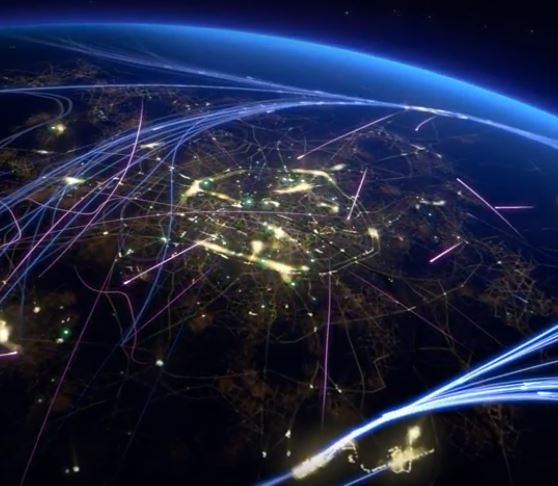The skies above Paris will be filled with 19,269 unmanned air systems (UAS) per hour by 2035, according to a new forecast by Airbus.
In its inaugural “The Blueprint” publication (utmblueprint.com – “The roadmap for the safe integration of autonomous aircraft”) Airbus outlines its vision for a future global UTM system, breaking down the market into requirements and concepts for airspace, systems, regulation and stakeholders, to be able to handle the future predicted traffic loads. The publication has been reviewed by experts from across the industry – including AirMap, GUTMA, NATCA, the World Economic Forum and MIT.
In its vision of how future UTM services will be provided, Airbus defines the system architecture as “microservice-oriented system architecture where services are built and provided by multiple players.”
“There may be multiple providers for any given microservice,” says the report. “For example, there may be several traffic management service providers, each performing real time tracking and deconfliction. A cargo company with a large fleet may operate a service that only manages their flights. Other services would be available for anyone to use as part of a marketplace. The authority would certify services, ensure interoperability and perform audits”
“A microservices approach does not mean that all functions will be served by multiple players. Governments may operate a services directory to ensure that only microservices which meet applicable certification requirements are able to operate. Others may operate a service to ensure that all parties have an identical, real-time view of traffic.”
In terms of identifying key enabling technologies, Airbus believes a combined detect and avoid (DAA) and airspace management will be needed to keep drones safely apart.
“With traffic management services maintaining separation for managed drones DAA is a back-up. Simulations show that it works well in low-density regions, while strategic and tactical management work better at higher densities. When there are more than a few drones in a 2 square kilometre area travelling at 100 knots, DAA creates follow-on conflicts caused by the resolution of the first conflict. The safest solution is a hybrid between management and DAA. If dangerous conditions can be anticipated, strategic airspace management adapts well. Tactical airspace management, meanwhile, is effective at avoiding near-term threats and keeping density lower. DAA is then a secondary option, avoiding follow-on threats.”
The document outlines six levels of UTM, leading from no automation to full automation, based in SAE J3016A.
(Image: Airbus Altiscope)
Average number of flights per hour in Paris by 2035
| 2016 | 2035 | |
| Commercial aircraft | 80 | 156 |
| Drone passenger/cargo flights | 0 | 2,500 |
| Delivery drones | 0 | 16,667 |
| Inspection drones | 1 | 58 |
| Hobby drones | 12 | 44 |




